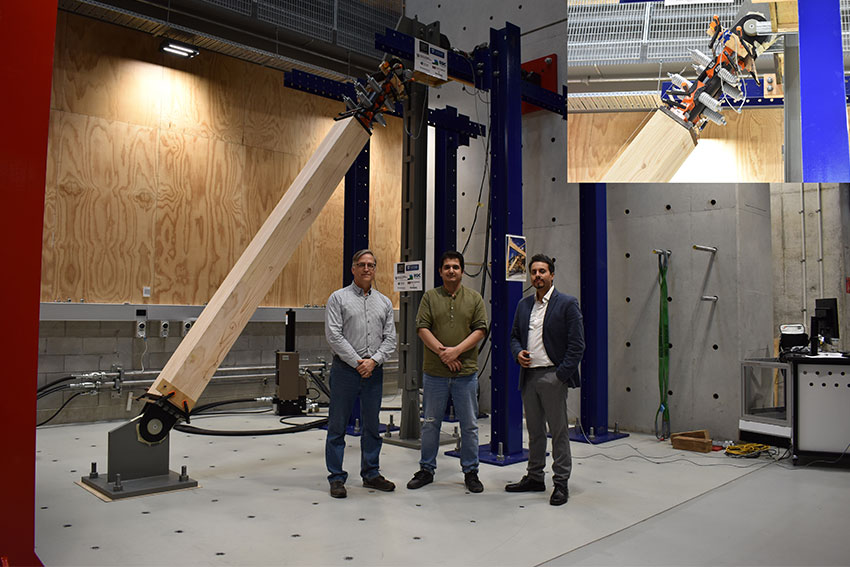Earthquake Proof Technology Test

New technology tested at AUT limits earthquake damage and self-centres building post quake
AUT’s Built Environment Engineering (BEE) Lab has just tested a new earthquake proofing brace system, designed to not only dissipate the force of an earthquake and limit the damage to the building, but to self-centre the building following a seismic event, allowing for rapid reoccupancy post-event.
The technology, invented by Dr Pouyan Zarnani of AUT, and investigated by PhD candidate Mohamed Yousef-Beik in a joint project with the University of Auckland (Prof Pierre Quenneville as Co-PI), is being used in new buildings, including the Hutt Valley Medical Hub. Dr Zarnani says the time immediately post a seismic event is when buildings like medical centres and hospitals are crucial, and this technology will help ensure they can safely provide critical services.
“Earthquakes pose a great threat to social and economic welfare, costing society at every event. Traditional seismic systems often require costly repairs and maintenance or even complete replacement following a seismic event - in some cases leaving the structure at risk for aftershocks whilst awaiting maintenance. Through effective energy dissipation and self-centring functionality of these new seismic connections, structures are able to withstand earthquake sequences without replacement or structural repairs,” says Dr Zarnani.
The technology works to dissipate the force of a seismic event through a friction joint in which the specially grooved plates are clamped using discs springs to provide self-centring. It has been successfully tested with the seismic force of a ‘one in 2,500 year’ event. For the shaky isles of New Zealand, this technology is a crucial step in reducing the need and associated costs for post-quake repairs for socially critical buildings.
The development of this technology was funded by MBIE and EQC and was supported by Tectonus, Techlam and Trider Engineers. The Built Environment Engineering (BEE) Lab is in AUT’s Nga Wai Hono building on the corner of Symonds and St Paul Streets.